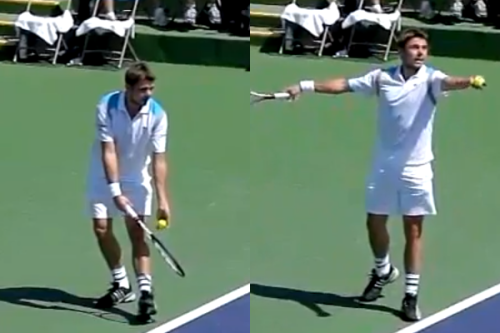My new pro pointed something out that I never noticed.
The pros ( right handed) have their racket going more out to the right on the take back rather than straight back.
Federers Racket is closed ( strings point down) and racket is more angled out to the right while Stan has his racket vertical and totally pointing to his right side.
I have a terrible serve but I hired someone to work on it and it seems I should be bringing him back to the right more. I guess this will allow for more arm movement action . My pro told me this.
I will watch the videos again tomorrow to make sure I am right.
The pros ( right handed) have their racket going more out to the right on the take back rather than straight back.
Federers Racket is closed ( strings point down) and racket is more angled out to the right while Stan has his racket vertical and totally pointing to his right side.
I have a terrible serve but I hired someone to work on it and it seems I should be bringing him back to the right more. I guess this will allow for more arm movement action . My pro told me this.
I will watch the videos again tomorrow to make sure I am right.

